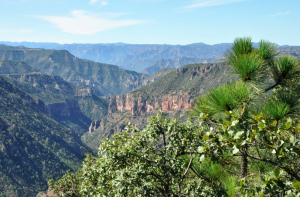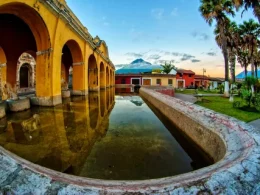Introduction
The travel world is buzzing about carbon footprints, overtourism, and rising ticket prices—but that doesn’t mean you need to shelve your backpack in 2025. Hidden corners of the planet still offer wild trails, crystal bays, and authentic cultural exchanges at prices a student or young family can manage. Even better, local cooperatives and non-profits now run many of these destinations, funneling visitor dollars into wildlife protection and village jobs rather than mega-resorts.
What Makes an Eco-Tourism “Gem”?
- Conservation impact – At least 30 % of visitor fees fund wildlife or habitat projects.
- Community benefit – Locals own or staff lodges, guiding keeps cultural knowledge alive.
- Low daily cost – Under $75 USD for lodging, meals, and basic tours.
- Low crowd density – Fewer than 200 000 annual visitors to protect serenity.
Each spot below meets all four points.
1. Misool, Raja Ampat, Indonesia

Why Go
Coral gardens in Misool hold more species per square meter than the Great Barrier Reef. The Misool Foundation bans commercial fishing in a 300 000-acre reserve, funded partly by guest stays.
Budget Tips
Sleep in homestay water huts ($40 pp with meals) rather than luxury bungalows. Shared speedboat from Sorong $25.
Green Note
Join weekly reef-cleanup dives for free tank refills.
2. Sierra Gorda Biosphere Reserve, Mexico

Highlights
Desert canyons, cloud forests, and 400+ bird species. Local NGO Grupo Ecológico Sierra Gorda manages reforestation and carbon-offset programs.
Costs
Comfy eco-cabins $35 per night. Self-guided trail permit $4. Bus from Mexico City $18.
Volunteer Idea
Plant saplings for one morning and earn a free guided night hike.
3. Žumberak–Samobor Hills, Croatia

Hidden Perk
Only one hour from crowded Zagreb, yet hiking here winds through wolf territory and medieval ruins with barely another tourist in sight.
Wallet Friendliness
Rural guesthouse doubles from €30 including breakfast. Park entry free.
Eco Angle
Farm stays serve organic cheeses and honey from on-site hives—zero food miles.
4. Nam Ha NPA, Laos

Adventure
Three-day community trek lets you paddle bamboo rafts, spot gibbons, and overnight in Khmu hill-tribe homes.
Price
All-inclusive trek $65 pp. Bus from Luang Prabang to Luang Namtha $12.
Impact
Village fund receives 25 % of each tour fee, financing school supplies and solar lamps.
5. Baviaanskloof, South Africa

Landscape
A UNESCO Mega-Reserve of jagged sandstone valleys and rare Cape mountain zebra.
Budget
Campsite $8 per person; thatched rondavels $25. 4×4 shuttle share from Port Elizabeth $20 pp.
Conservation
Volunteer for alien-plant clearing and earn park fee waiver.
6. Togean Islands, Sulawesi, Indonesia

Serenity
No cars, no ATMs, just hammock time and sea turtles.
Cost Chart
ItemPrice (USD)Beach hut + meals22Snorkel trip7Ferry from Ampana2
Eco Practices
Solar power lights rooms at night; waste-back-haul policy bans single-use plastic.
7. Aysén Region, Chilean Patagonia

Draw
Glacial rivers and hanging valleys without big-bus crowds seen further south.
Saving Hint
Ride shared van from Balmaceda Airport to Puerto Río Tranquilo ($15). Pitch tent in free CONAF zones or hostel at $28.
Stewardship
Park fees feed the Ruta de los Parques corridor, rewilding sheep ranches into puma habitat.
8. Volcan Tenorio Corridor, Costa Rica

Star Feature
Electric-blue Río Celeste waterfall and sloth-filled canopy walks.
Cost
Community homestay $30 including two meals. Bus Liberia → Bijagua $4.
Eco Angle
Local women’s co-op manages trails and funds wildlife rescue center.
9. Carpathian Beech Forests, Ukraine

Wonder
Primeval trees, lynx tracks, and traditional Hutsul culture.
Budget Facts
Overnight train Kyiv → Rakhiv $10. Village B&B with breakfast $18.
Support
Tourism provides income that deters illegal logging; guides are trained forest rangers.
10. Raja Ampat of the Balkans: Gjipe Canyon, Albania

Visuals
Turquoise river sneaks between limestone walls before merging into the Adriatic.
Dollars and Cents
Beach-side eco-camp $12 including kayak use. Bus Tirana → Himarë $9.
Sustainability
Zero-plastic pledge; guests refill filtered water, compost toilets fertilize olive groves.
How to Travel Light and Green
Pack Smart
- Refillable 750 ml water bottle, water filter straw.
- Biodegradable soap, solid shampoo bars.
- Solar battery bank.
Transport Hacks
- Use regional buses instead of flights where feasible—saves carbon and cash.
- Ride-share apps in rural zones often list weekly shuttles; ask hostel boards.
Eat Local
Skip imported beer; try regional brews or herbal teas. Street markets cut packaging and support small farms.
Respect Wildlife
Keep drones grounded around nesting zones. Observe minimum distances: 15 m for birds, 25 m for mammals.
Budget Planning Example – 7 Days in Baviaanskloof
Transport
Port Elizabeth bus + shuttle: $40
Accommodation
6 nights camping: $48
Food
Self-cook groceries: $70
Activities
Park permit + two guided walks: $25
Miscellaneous
Souvenirs + tips: $20
Total: $203 (≈$29/day)
Safety and Cultural Respect Tips
- Learn basic phrases: “Thank you” in Lao, Croatian, or Albanian opens smiles.
- Store digital copies of passports; remote areas may lack scanners.
- Check local dress customs—cover shoulders in village temples.
- Travel insurance should cover trekking and water sports.
Future of Eco-Budget Travel
By 2030 many parks plan mandatory carbon-offset fees baked into permits. Blockchain tokens may soon trace your entry fee straight to specific trees planted. Remote-work visas in these areas could let travelers stay longer, spending less per day and funding conservation year-round.
Conclusion
Eco-tourism does not require luxury resorts or sky-high prices. From Indonesia’s coral refuges to Ukraine’s ancient beech groves, budget-minded travelers can explore pristine nature, fuel local economies, and still keep savings intact. Pick one hidden gem, book that homestay, and pack a reusable bottle—your next adventure will refresh both you and the planet.
Call to Action: Choose a destination from the list, set a monthly saving goal, and share this guide with a travel buddy—the Earth-friendly voyage of 2025 starts with a single committed step.












